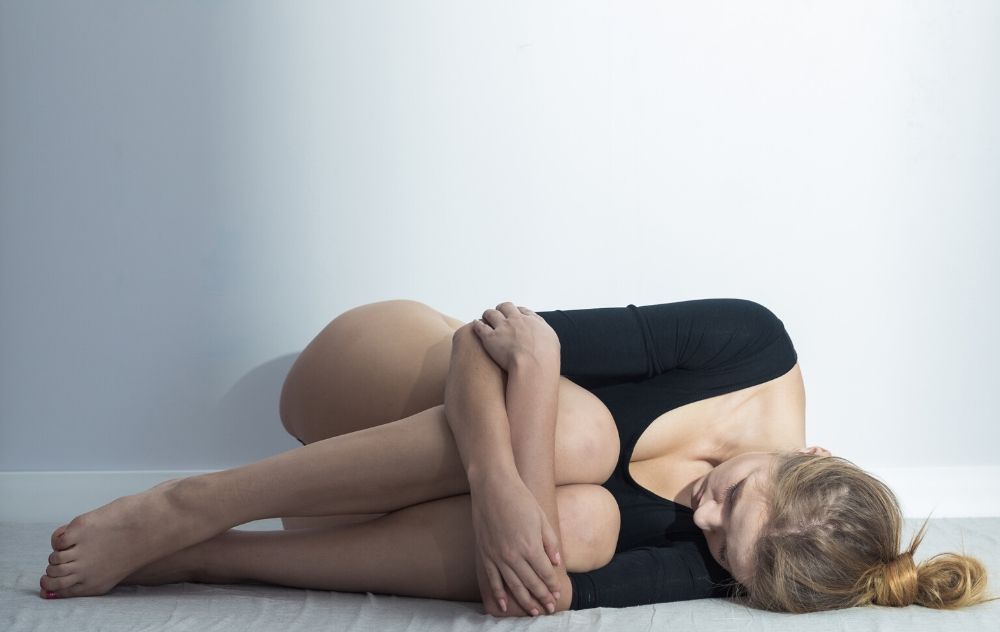
If you are living with fibroids, we want you to know that there’s help available. Many women with symptomatic fibroids regularly need to call in sick to work or cancel social engagements due to heavy periods, severe cramps, frequent urination, or low energy levels. Others report intimacy and relationship issues as a result of painful sex or poor body image.
At USA Fibroid Centers, our specialists offer a unique, non-surgical solution that can eliminate your symptoms and change your life. Below, you’ll discover everything you need to know about:
- Managing painful and uncomfortable uterine fibroid symptoms
- A minimally invasive treatment called Uterine Fibroid Embolization (UFE)
- How to take back control of your life
Uterine Fibroids
Did you know that up to 80% of women develop uterine fibroids by age 50? Also known as myomas or leiomyomas, uterine fibroids are benign growths that form along the uterine walls. These noncancerous tumors can range from microscopic growths to large masses and can occur in single instances or groups.
Many women are unaware of the presence of fibroids because some cause no symptoms at all. However, some fibroids develop into bulky, larger growths that can enlarge or distort the uterus, causing symptoms such as:
- Heavy menstruation
- Periods lasting 10 days or longer
- Frequent urination or difficulty emptying your bladder
- Pain or pelvic pressure
- Protruding abdomen or belly
- Backache or leg pain
- Constipation
- Pain during sex
- Fatigue from anemia
To learn more about the above symptoms and see if your pain could be caused by uterine fibroids, take our 1-minute quiz now.
Fibroid Causes
While doctors cannot define a specific cause for fibroid growth, research indicates that a combination of the following factors may lead to their development:
- Hormones: It is believed that estrogen and progesterone play a major role in fibroid development. Once hormone production declines — for example, after menopause or pregnancy — fibroids often shrink.
- Genetic Changes: Genetic sequencing has indicated differences between fibroids and normal uterine muscle cells.
- Other Growth Factors: Insulin-like growth factor (IGF), a protein made by the body that stimulates the growth of many different types of cells, is another possible cause.
- Extracellular Matrix (ECM): This material causes cells to stick together, giving fibroids their fibrous consistency. Storing growth factors and causing changes within the cells are also attributed to ECM.
Fibroid Risk Factors
Besides being a woman in your childbearing years, certain internal and external factors can increase your chances of developing uterine fibroids, including:
Race: Research shows that black women are more likely to develop fibroids than women of other races. Hispanic women also face a higher likelihood, followed closely by Caucasian women.
Genetics: You’re at an increased risk for fibroids if your mother, sister, or someone else in your family has them.
Environmental factors: Vitamin D deficiency, obesity, use of birth control, too much red meat, drinking alcohol, or experiencing your period at a young age may all increase your likelihood of developing fibroids.
Fibroid Diagnosis
To accurately diagnose your fibroids, your doctor may suggest:
- A pelvic exam: To reveal a uterine mass or enlarged uterus
- A hemoglobin evaluation: To detect iron deficiency if you report heavy bleeding during or between periods
- An ultrasound test: This common diagnostic tool is widely available at a low cost
Do’s and Don’ts of Living with Fibroids
If you suspect you may have uterine fibroids, it is essential to obtain a formal medical diagnosis. Some fibroid symptoms are very similar to those involving other conditions of the female reproductive tract.
Do…
Listen to your body carefully:
Fibroids cause many painful symptoms. It’s important to note any changes in your period’s regularity, heaviness, or length. If it’s becoming difficult to manage your period pain, it’s not normal.
Explain your symptoms:
It may be embarrassing to talk about symptoms, or you may think it’s normal to experience severe pain or extensive bleeding. Tell your physician how you feel and how long you’ve been experiencing these symptoms.
Know your treatment options:
There are different surgical and non-surgical treatment options available for fibroids. One of the most common options for fibroids is a hysterectomy, the surgical removal of the uterus. There is also a less invasive, non-surgical treatment called Uterine Fibroid Embolization (UFE).
Ask questions:
Always prepare a list of questions to ask your physician. Our interventional radiologists welcome questions or concerns. We also have a dedicated insurance department to respond to questions.
Stay calm:
Symptomatic fibroids can cause immense stress on your body and mind. Asking questions, talking about what you’re going through, and feeling good about your treatment decision can help.
Don’t…
Feel embarrassed:
We have helped thousands of women suffering from heavy and prolonged menstrual periods. What you are experiencing is not new to us. We understand that talking about your period may not be the most fun experience, but our doctors know how to help and are happy to work with you in any way that makes you feel more comfortable.
Lose hope:
A lot of women suffering from painful fibroid symptoms feel like they have to live with this for the rest of their lives. Ignoring or disregarding your symptoms is not an effective solution. Explore our website to learn how we’ve helped countless women live happier, healthier lives after UFE.
Delay treatment:
A majority of women with symptomatic fibroids think they will have to go through a hysterectomy. As a result, they delay treatment and suffer in pain. On average, women may wait one to three years before actually getting treatment.
Be overwhelmed:
Symptoms of uterine fibroids can be painful and challenging. We understand that when dealing with symptomatic fibroids, the last thing you want to do is do extensive research about fibroid treatments. That’s why at USA Fibroid Centers, we try to make your fibroid treatment experience as streamlined and convenient as possible.
Be afraid to look at treatment options:
If you have been told that a hysterectomy is your only treatment option, be sure to seek a second opinion. If you want to preserve your uterus, have a shorter recovery, and avoid unnecessary surgery, we can help.
Tips for Managing Symptomatic Fibroids
Although healthy lifestyle choices won’t prevent fibroids, they may help alleviate symptoms. We recommend that you aim to incorporate the following into your daily life:
Healthy diet: Maintaining a diet rich with green vegetables, cruciferous vegetables, fruits, and healthy dairy may decrease the symptoms of fibroids, while diets high in sugar may have the opposite effect. If your period is especially heavy or lengthy, eat foods that contain iron to help avoid developing anemia.
Regular exercise: Incorporating exercise into your routine can help with some symptoms. Try yoga, stretching, aerobics, swimming, and jogging. These activities help induce endorphins that manage pain and reduce cramping.
Hydrating: Drinking water helps reduce bloating. Consuming hot tea can increase blood flow and may relax cramped abdominal muscles. Proper hydration can also help with constipation and symptoms of anemia.
Avoid caffeine: This may help reduce pelvic pain and abdominal pressure.
Eat fiber: Getting enough fiber in your diet can help decrease constipation.
Vitamin D supplements: Some studies have shown that taking these may help reduce your risk of developing fibroids. It is important to talk to your doctor before regularly taking any supplements.
Remember, these natural methods may offer only temporary relief — medical treatment is still necessary to eliminate uterine fibroids and get lasting, effective results. Here are some additional tips to help you manage fibroid pain and discomfort:
- Hold a hot water bottle on your lower stomach
- Take warm baths
- Use over-the-counter pain relievers such as Ibuprofen, Naproxen, or Acetaminophen
- Manage your blood pressure, as there is a correlation between high blood pressure and fibroids
- Try relaxation techniques like yoga, massage, meditation and Tai chi to manage stress
- Keep a period survival kit with you that includes extra tampons and pads, a change of clothes, snacks, and comfort items
Discover Uterine Fibroid Embolization (UFE)
If you’ve been told that hysterectomy –– the complete surgical removal of the uterus –– is your only available fibroid treatment, we want you to be aware of a better option. Our top-rated interventional radiologists offer a minimally invasive, non-surgical treatment called Uterine Fibroid Embolization (UFE).
The benefits of UFE include:
- Can effectively eliminate fibroid symptoms
- Takes only 30 to 45 minutes
- Has a short recovery time of only one to two weeks
- Uses only local anesthesia and a relaxing sedative
- Involves fewer risks than surgery
- Performed as an outpatient procedure
- No hospital stay required
When you choose to have Uterine Fibroid Embolization, you can go home the same day as your treatment to begin your new life. To learn more about why UFE is considered the gold standard in uterine fibroid treatment, schedule an appointment today. USA Fibroid Centers is now offering convenient telemedicine consultations.
We look forward to meeting you!



